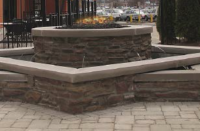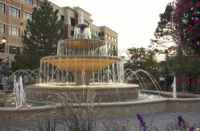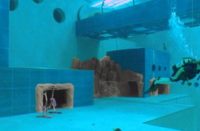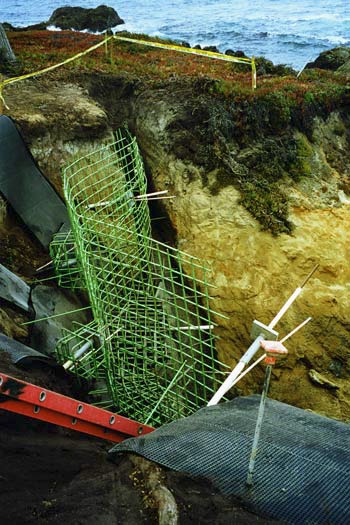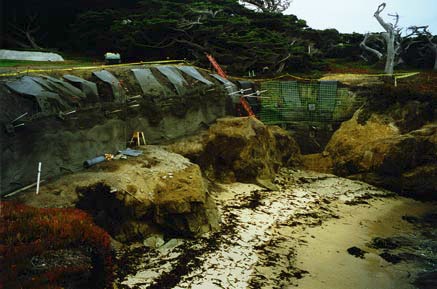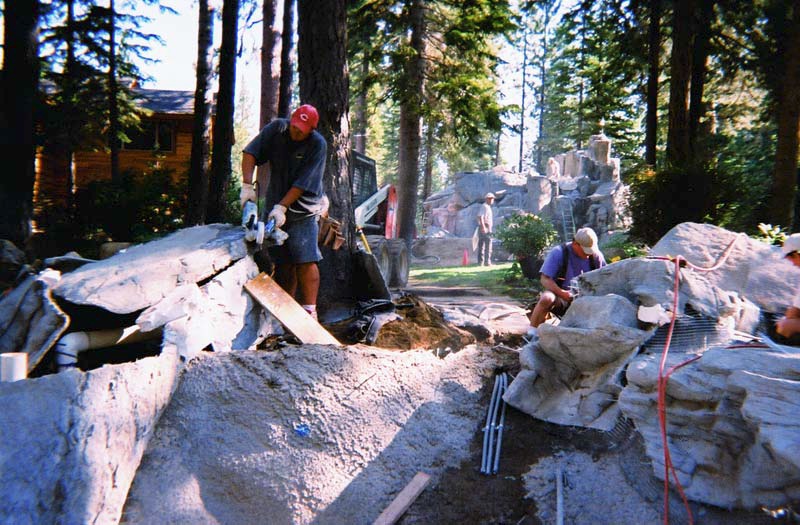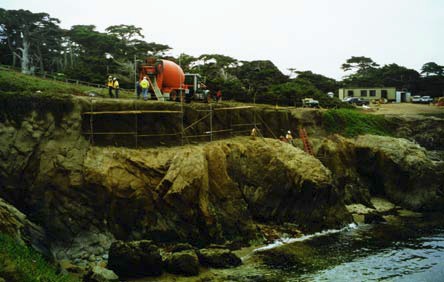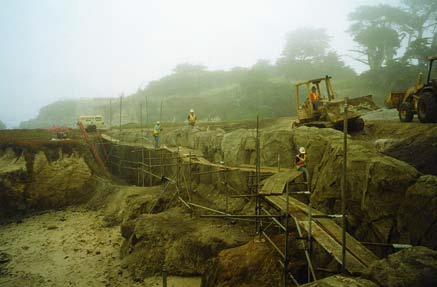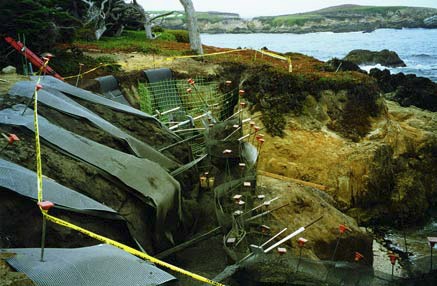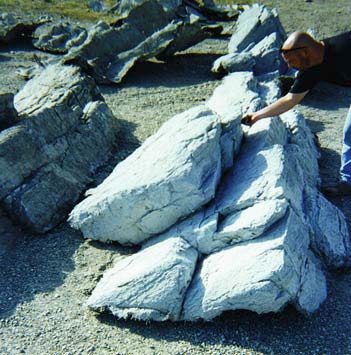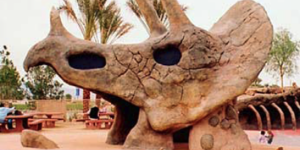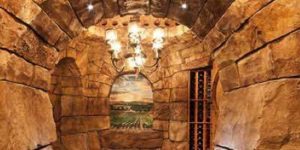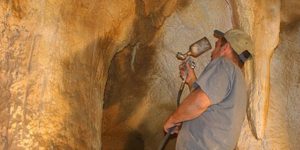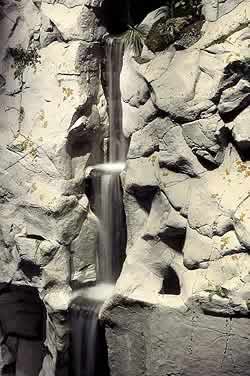 On one hand, fashioning synthetic rock can be an engineering challenge. On the other, from back yard to theme park, creating geologic reproductions and making them look — naturally — like the real McCoy is definitely an art.
On one hand, fashioning synthetic rock can be an engineering challenge. On the other, from back yard to theme park, creating geologic reproductions and making them look — naturally — like the real McCoy is definitely an art.
Synthetic rock features are not new. Turn of the century examples exist in the United States and elsewhere around the world. But it is probably Walt Disney, and his Disneyland in Anaheim, California, that gave faux rock a real boost. Now, synthetic rock is commonplace at theme parks, zoos, aquariums, museums, resorts, hotels and many other places — and there’s a growing demand for residential applications. Swimming pools, ponds, waterfalls, fire pits, outdoor seating areas, retaining walls and exterior veneers are just a few of the ways synthetic concrete rocks are finding their way into our back yards.
There are many ways to build a rock
Concrete is an ideal material for synthetic rock. Cement hasn’t changed much over the years, but the equipment and techniques have all gotten better. Compared to the cost and engineering problems associated with real rock, concrete is quite affordable and easy to use. Whereas fiberglass — another material often used to create faux rock — is a highly regulated technique. Acrylics, urethane and plastics are also used to simulate rock, but they are expensive and typically don’t give the same realistic appearance. For longevity, concrete rocks are hard to beat (no pun intended). In fact, concrete rocks can achieve such a high degree of concrete strength they could last longer than some real rock types.
There are various techniques used to create synthetic rock out of concrete, reports Jacob Stoddard, operations manager for JPJ Technologies L.L.C., a synthetic rock training school in Wickenburg, Arizona. Synthetic rocks can be molded or cast, sculpted over a support structure, made from fiber reinforced synthetic concrete (often in panels) or created with hand-manipulated construction. “Re-bar and lathe is traditional” when it comes to the support structure, he says, but synthetic rocks can be built with hollow or solid fills. In some applications shotcrete or gunnite is used. In others, the faux rock can be constructed over a brick wall or built onto a house.
Sometimes, part of the construction occurs off-site. Glass fiber reinforced concrete, the classic replacement for fiberglass, can be used to construct 360-degree complete items or used to build panels that are assembled on-site. “GFRC is treated and worked the same as fiberglass,” Stoddard explains.
Faux Rocks and Coloring Rocks
Making a faux rock look like the real thing involves the shaping and texturing of the rock and then coloring it. Typically, synthetic rocks are molded or free-formed. “A mold is the best replication possible. There is no better way to do it in realism. You copy Mother Nature,” Stoddard explains. But free-forming, “that’s where it gets fun,” he says.
Free-forming is very common in large-scale projects and various texturing techniques can be used to create unique results. Mats and other objects might be used to imprint a texture. Tools can be used to carve or sculpt a design. Or material might be added on — “reverse carving” — to achieve the desired effects.
Coloring synthetic rock, also, generally falls into several categories, according to Stoddard. Dying, or integral color, is one category, but many contractors consider it unnecessary. However, if the overlay is thin or you want to expose special aggregate, such as mica or pebbles, integral color may be appropriate. The most common coloring technique is use of a penetrating stain. Painting, using latex paints, is another popular technique.
Synthetic rocks that will be immersed in water need to be waterproof. It’s critical to prevent problems down the road. Sealing synthetic rocks, on the other hand, depends on the application and the contractor — some do, some don’t.
Everyone does it differently
Talk to a dozen synthetic rock contractors and you’ll learn that every one makes their rocks a little differently. Considering the huge number of variables in this work — location, site factors, materials, construction techniques, method of texturing, method of coloring and sealing, etc. — it’s easy to understand. Stoddard calls it the “X-Y-Z” factor. “Everything has its time and place. It’s not hard; it’s just knowing when to do what.” And every job may have several methods and building processes, so it’s not just one X-Y-Z.
David Long, CEO of Lakeland Co. Inc. of Coeur D’Alene, Idaho, has been doing synthetic rock work for some 30 years and uses either GFRC panels or positive carved rock work techniques. With the GFRC panels “all the ingredients of the mix are critical,” he says. “Indoor applications are typically left hollow; exterior applications can be filled solid.” He uses shotcrete as the base foundation for his positive carved rocks, layering a brown coat on top of that and texturing a cement/plaster coat with texture mats.
Realism versus Costs
GFRC panels have a more realistic look, but it “costs more because of the extra labor and equipment costs. Assembly time is not necessarily excessive,” observes Bob Wallace, Director of Sales at Custom Rock International in St. Paul, Minnesota. Shotcrete, he remarks, is less expensive, can be applied faster and is a good choice if the final look is not as critical or the viewing distance is farther.
For its panels-only projects, Custom Rock pre-makes panels off-site. The panels average seven feet by seven feet and weigh about 600 pounds. “We produce a sample panel for approval and to have on site [for reference],” Wallace says. A forklift or crane is used to set the GFRC panels in place on-site. Wallace says they seam their panels with metal lath and hand-applied concrete, using textured skins to blend them in. “When several panels are tied together the composite strength is increased [and] when done right you can’t detect the seams.”
Large-scale projects require different degrees of natural
“The amount of detail needed depends on the viewing distance,” Long explains. “Take zoos for example. The viewing public is a distance away, so a shotcrete backdrop might be all that’s needed. In a museum, if they wanted a mine shaft for people to walk through, a molding process and GFRC is a better technique because you will have the detail of the rock,” he says.
If hand-carving is required, you should keep that in mind when you design your mix — and it’s all a bit of a balancing act, says David Taplin, vice president of CemRock in Tucson, Arizona. “It’s easier to carve with smaller aggregate, but with smaller aggregate you need more cement. Cement makes the mix slipperier, but sets up quicker. But you can put in retarders so it doesn’t set so fast”. One thing Taplin is firm on is having a low slump for less shrinkage.
That the rock looks natural is very important to Long. “We’ve shied away from too much rock work [in order] to balance the project with other elements, such as plants and architectural elements. [We want to] make it appear that the rock work is part of the environment instead of an add-on.” To do that, he often includes plant pockets.
Knowing a bit about geology is important to achieving realism, says Wallace. And, for coloring, it helps to be an artist, he adds. Custom Rock, he explains, favors topical color, with light colors serving as a base, then using darker colors and different shades to create shadows and variations in the surface colors.
Taplin says CemRock uses water-based latex paints thinned down, “almost like a stain,” to color its synthetic rocks. Application techniques, he adds, include spray, spatter, pouring, sponging and ragging.
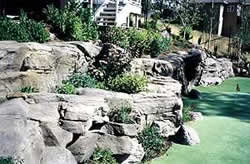 Home-size projects offer a lot of variety
Home-size projects offer a lot of variety
Residential work is a growing market for synthetic rock. Mike Davis, president of Rock Pools by Mike Davis in Quartz Hill, California, has created complete pools with waterfalls and rock slides, koi ponds, retaining walls and has rock-veneered homes — he even rocked a picnic table. “It’s very creative; not two jobs alike,” he reports. When working with customers, he asks, “What do you visualize?” Then he creates a pencil sketch, but “it always changes from the paper to the back yard, because you get creative.”
Davis gets his customers involved in the process. “I hand them a trowel and have them help sculpt the rock — the kids, parents, dad”. Doing so gives his customers additional pride in the project, because they helped create it, he explains.
Breck Viley, owner of Breckenridge Rock Works in Santa Ana, California, does a lot of exterior applications — pools, waterfalls, water features and the like — but has also created synthetic rocks for a wine cellar that now looks like a cave. “Anything you can think of, we can do.”
Timeframe is Important
Viley makes a point of educating customers how to take care of their synthetic rocks and how to maintain them. He advocates sealing once every two years.
“Smaller projects — like pools, ponds, waterfalls, retaining walls — are a good niche for pool contractors and concrete contractors,” Taplin advises. These projects might require a week-and-a-half to two-week timeframe. However, adding them to a standard project can increase the profitability of a job. For example, “If someone spends $25,000 to $35,000 on a pool, they may pay an extra $10,000 to $12,000 for rock work so they have something special, something different.”
But remember to not go overboard. “I’ve seen people get carried away and everything is out of scale,” reports Paul Horton, manager of Roseburrough Tool Co. in Orange, California. “In a small back yard, an eight-foot high rock looks like a volcano.”
Getting it all together
The growth in this market means there’s lots of opportunity to go around.
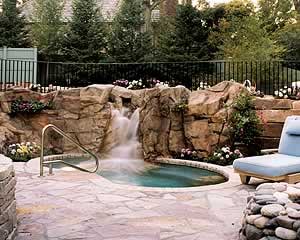 “A lot of the really big guys are booked out two to three years, so commercial facilities are looking for smaller companies,” observes Long. And, while it’s not cost effective for a large company to do a smaller job, the “big guys” sometimes look for local talent on some of the big jobs they tackle. “We’ll utilize local personnel. The benefit is we have professionals to work with… They know concrete; we show them a new application. Everyone gets compensated and the customers are happy.”
“A lot of the really big guys are booked out two to three years, so commercial facilities are looking for smaller companies,” observes Long. And, while it’s not cost effective for a large company to do a smaller job, the “big guys” sometimes look for local talent on some of the big jobs they tackle. “We’ll utilize local personnel. The benefit is we have professionals to work with… They know concrete; we show them a new application. Everyone gets compensated and the customers are happy.”
Smaller companies that want to do larger projects can, in turn, look to the larger companies for what they can provide. “Molds and creating panels can be expensive and require special equipment, but small contractors can purchase these from large commercial installers,” Taplin says.
If learning how to create synthetic rocks out of concrete appeals to you, the timing is right. Around the country there is more demand than supply in both residential and commercial applications. Luckily, if you work in concrete already, you’ll probably use all the same tools, materials and stains. And like on your other jobs, it’s good to keep construction notes. You never know when you’ll be called back to add on.
